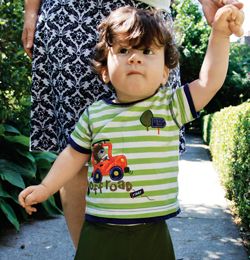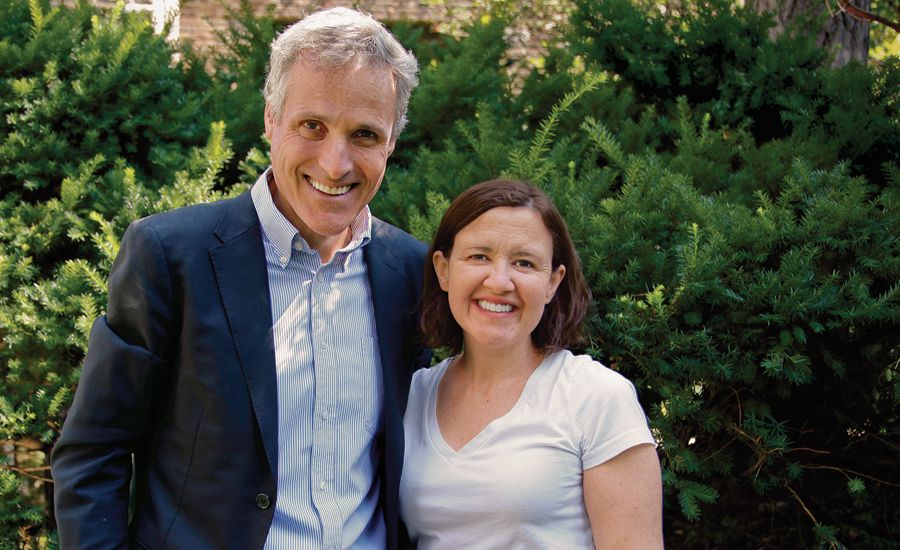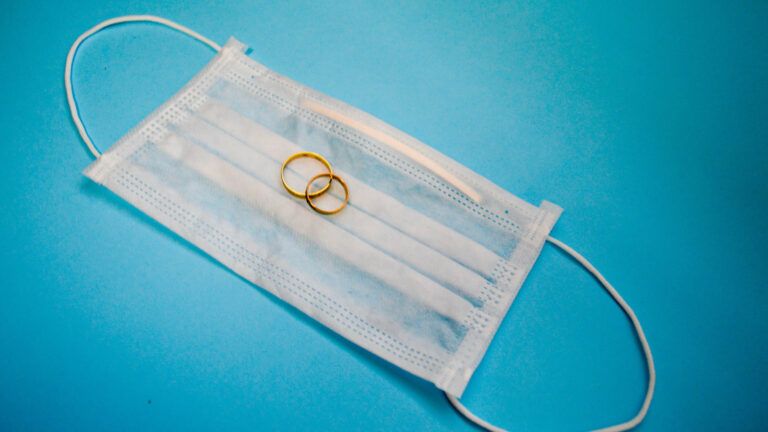The note appeared in my mailbox, handwritten and signed with both an e-mail and a snail-mail address. The woman lived in my Upper Manhattan apartment complex, just down the drive and across a courtyard, but I didn’t recognize the name. Not surprising, in a place with more than 300 units.
“Would you and your colleagues at Guideposts please pray for me?” she asked, and then she went on to explain her situation.
A young mother with three boys, she had been diagnosed with an aggressive brain tumor, glioblastoma multiforme. She’d had surgery, but getting follow-up radiation treatment was a problem because she was 22 weeks pregnant. Many doctors feared the treatment would be risky for the fetus.
But a team at New York-Presbyterian, the large teaching hospital 15 blocks south of us, wanted to try a new approach that could deliver the radiation safely—with a specially designed shielding device for the womb. It had been tested in the lab but never on a pregnant woman.
I showed the note to my wife, Carol, because “glioblastoma” sounded scarily familiar. A good friend, another neighbor, had lost his life from a brain tumor several years before.
“Wasn’t it the same thing?” I asked. Carol nodded. We both read the name on the note: Pamela Sternberg. “Do you know her?” I asked. Carol shook her head.
How Pamela had found me, how she knew I worked for Guideposts or even that we prayed regularly for people like her was a mystery.
I e-mailed her immediately: “Thanks for your note, Pamela. We will certainly pray for you and your healing and your child.” The truth was that just writing the e-mail was the start of my prayer. Reaching out can be the best way of praying.
I brought Pamela’s note to the group that meets in Guideposts’ New York offices on Monday mornings at 9:45, sharing prayer requests that come from our readers and from the OurPrayer community online. I read her request aloud—it seemed so urgent—and we prayed for Pamela and her family.
Then I put that note on the top of a pile of Post-it notes and other scraps of paper that I keep on my desk, reminders of people who need prayers.
It always helps me if I can visualize the person I’m praying for. I pictured a woman pushing a stroller on the path in front of our apartment with two kids racing ahead.
I imagined her in the playground across the street, where Carol and I had spent countless hours with our own boys when they were young, one kid in the sandbox, one on the slide. I looked to the future, seeing her carrying a newborn, safe and secure in a Snugli.
Believing in an answer to prayer, keeping the faith, can be a challenge. Fearful thoughts will wander through my brain. I’ll think of the odds against a healing or a recovery. “What are the chances?” I’ll ask myself. Holding something tangible, like a note, helps me focus on a positive outcome.
Concentrating on someone else’s problem, praying for them, makes my own troubles shrink by comparison. It gives me perspective. I think that’s one of the many ways God ministers to us when we pray for others.
An e-mail or a text is also a great prayer tool. I’ll send an e-mail to someone on my list, asking how they’re doing. It’s a prayer reminder for both me and the recipient of the e-mail, a comfort to know that someone is thinking of them.
Pamela had a CaringBridge site online where I could keep up with her progress, but she was also good about e-mailing me.
What a happy day it was to read the good news. That June 19, Pamela gave birth to a healthy six-pound baby boy called Timmy. Both she and he were doing well. “Congratulations,” I e-mailed her. “What a perfect name! Our younger son is a Timothy.”
More prayers needed to be said for Pamela. She wasn’t out of the woods yet. But something that had been deemed nearly impossible had happened through a creative team of doctors who didn’t take no for an answer. We couldn’t either.
I kept Pamela’s note on my desk as a reminder, but I was also certain that I would eventually run into her in the neighborhood, standing on the subway platform or pushing a kid on a swing. (We New Yorkers don’t simply drop in on each other, even if we’re neighbors. Anyway, with four boys, she had her hands full.)
I checked CaringBridge a couple of times and alerted the prayer group to new developments. She had a round of chemo. The tumor hadn’t regrown. She seemed to be doing okay.
Then one day in the small gym in our complex, I noticed a woman on the stationary bike, headphones on, wearing a shirt with the name of my mom’s alma mater, Scripps College.
This was pretty unusual. Scripps is a small women’s college in Claremont, California, 2,700 miles away. I had to ask, “Did you go to Scripps?”
“I did,” she said.
“So did my mom. And both of my sons went to neighboring colleges.”
She looked at me quizzically. “You aren’t Rick Hamlin by any chance, are you?”
“Yes,” I said.
“I’m Pamela,” she said. Healthy, a little sweaty from her workout, smiling, she looked even better than I’d hoped, a real answered prayer.

“When I was first diagnosed I was really worried, and so I started reading a stack of Guideposts magazines that a friend had given me. I saw your name on an article and someone said you lived here. So I figured I might as well write.”
“I’m so glad you did.” The only thing I didn’t tell her is that I don’t have her note anymore. Somehow it got lost when we moved offices. The next day, I put her name and Timmy’s on a new Post-it. It’s still on my desk.
Download your FREE ebook, A Prayer for Every Need, by Dr. Norman Vincent Peale.






